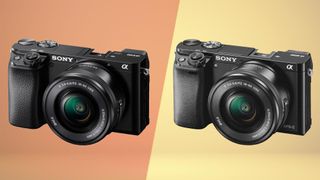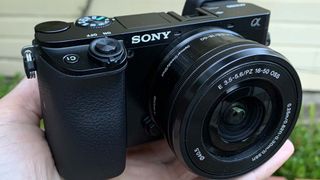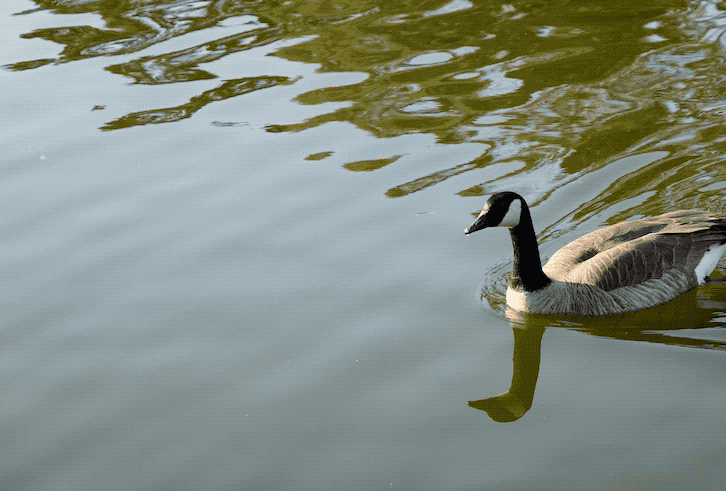Sony Alpha a6000 vs. a6100 Mirrorless Cameras: Which is best for you?
Sony Alpha a6000 vs. a6100: Which mirrorless camera should you buy?

Sony makes some of the best mirrorless cameras, as they’re very capable devices at fair prices. One of Sony's strengths is that its cameras age well. The Sony a6000 is still a competent imaging device even though it’s been around for more than six years. And as successor models have come out, the original a6000 price has dropped from $800 to just $548, with 16-50mm kit lens. There are also attractive prices on two-lens bundles.
That said, there have been some important technological advancements since the debut of the a6000. They include 4K video, richer color, crisper low-light photos and autofocus that’s far better at following a subject. These and other improvements are rolled into the new Sony a6100, which sells for $788 with the same kit lens. For some photographers, these upgrades are well worth an extra $240. But the original a6000 delivers very good quality for a wide variety of shots, and other buyers will be happy saving money with the original model.
Let's take a closer look at the Sony a6000 vs. the Sony A61000 to see how these two cameras compare.
Sony a6000 vs. a6100: Specs at a glance
| Row 0 - Cell 0 | Sony a6000 | Sont a6100 |
| Price (body/kit lens) | $448/$548 | $599/$788 |
| Image sensor | 24.3MP APS-C | 24.2 APS-C |
| Shooting speed (with AF, AE) | 11 fps | 11 fps |
| AF points (phase/contrast) | 179/25 | 425/425 |
| ISO range | 100-25,600 photo 100-12,800 video | "100-51,200 photo 100-32,000 video" |
| Autofocus features | Lock-on AF, Eye AF | Real-time tracking, Eye AF and Animal Eye AF |
| Max video resolution | 1920 x 1080 at 60fps | 3840 x 2160 at 30fps |
| Image stabilization | in-lens | in-lens |
| Time-lapse | No | Intervals between 1 and 60 seconds |
| Slow motion | No | 120fps |
| Silent shutter | No | Up to 8fps |
| Rear screen | 3-inch, 640 x 480 LCD Tilts up 90 degrees, down 45 degrees | 3-inch, 640 x 480, LCD touchscreen Tilts up 180 degrees, down 74 degrees |
| Viewfinder | 0.39-inch, 800 x 600 OLED | 0.39-inch, 800 x 600 OLED |
| Hot shoe | Yes | Yes |
| External mic input | Via hot shoe | 3.5mm audio jack |
| Battery life (viewfinder/LCD) | 310/360 | 380/420 |
| Size and weight (body only) | 4.7 x 2.6 x 1.8 inches 12.1 ounces | 4.7 x 2.6 x 1.96 inches 14 ounces |
Sony a6000 vs. a6100: Design
Sony has scarcely changed the design of the a6000 series cameras since 2014. That's good in some aspects and bad in others. On the good side: The camera bodies are compact and easily fit in a coat pocket or purse (when a small lens like the 3X zoom is attached). A deep right-hand grip offers a firm hold. A pair of adjustment wheels and plenty of programmable buttons generally make quick adjustments at a snap.
The 0.39-inch OLED electronic viewfinder is a godsend in bright light, when the rear LCD is easily washed out. (viewfinder resolution is unchanged but adequate at 800 x 600). Along with being dim, that rear LCD remains smallish at 3 inches and low-res at 640 x 480.
That said, the new LCD gets some nice upgrades. While the a6000's screen tilts up just 90 degrees, the new a6100's goes up a full 180 degrees to face forward, allowing you to compose selfies. The newer camera's LCD is also a touchscreen, which lets you tap the LCD to set focus point or choose a subject to track. But you can't use touch to navigate the intricate on-screen menus, which have only grown more complex over the years.

Sony a6000 vs. a6100: Photo quality
In bright light, image quality is very similar between the cameras, with nearly identical color. You can see an example in still life photos of fresh fruit, in which both cameras captured colors almost exactly as they looked in real life.
Sign up to get the BEST of Tom's Guide direct to your inbox.
Here at Tom’s Guide our expert editors are committed to bringing you the best news, reviews and guides to help you stay informed and ahead of the curve!
While resolution of the two cameras is roughly the same— about 24MP — the a6100 offers a more advanced sensor capable of higher ISO light sensitivity. Among the sensor's improvements is the use of copper wiring, which conducts the signal better and allows pixels with greater surface area. This is coupled with a newer-generation Bionz X processor that can better suppress noise and preserve detail. The result is a camera that can capture clean images up to ISO 6400, vs. ISO 1600 for the original a6000. This is a significant boost for low-light shooting, especially if you will be displaying the photos large or heavily cropped in.
These photos, each shot by low light at ISO 3200, show how the two cameras compare. Note the detail in the Apple and in the shadow areas.
Sony a6000 vs. a6100: Autofocus
The a6000 caused a sensation when it debuted in 2014 with the ability to shoot 11 frames per second, while setting autoexposure and autofocus for each frame. The a6100 retains that overall shooting speed, and makes major upgrades to almost guarantee your subject is in focus.
While the a6000 features 179 phase-detection and 25 contrast-detection autofocus points, the a6100 boasts a whopping 425 of each type. Combined with a newer image processor, the a6100 runs sophisticated autofocus algorithms that are uncannily good at quickly identifying and locking on the subject of a photo. You can see that in how the a6100 captured this crisp photo of a bird that suddenly rears up, flapping its wings.

The a6100 also adds a touchscreen LCD, which allows you to tap on the portion of the image preview where you want to set focus for an immediate shot or to choose a subject that the camera will continue to follow, like the bird in this series of photos.

The more powerful processor in a6100 also enables real-time Eye Autofocus, which sets focus on the subject's eye (your choice of left or right) when you are shooting a portrait. Eye Autofocus works on humans as well as animals like cats and dogs. You can enable Eye Autofocus on the a6000, but it requires programming a button to activate the feature, then holding that button down when you press the shutter. It's a much clunkier way to use the feature, which works only on human eyes, for the a6000.
Sony a6000 vs. a6100: Video quality
The a6000 is a very capable HD video camera, capturing rich colors and sharp detail. Its quality is more than enough for social media posting, such as home movies on Facebook, or for video blogging.
The a61000's principal upgrade is the ability to shoot at 4K/UHD resolution (at either 30fps or a cinematic 24fps). This is valuable if you aspire to produce professional videos or even indie movies. Another key pro upgrade: The a6100 has a stereo microphone input jack, allowing you to use any external mic to capture professional-grade sound. The a6000 can use only four Sony external microphones that connect via the company's multi-interface hot shoe on the top of the camera.
Even shooting in HD, however, the a6100 offers better low light performance than the original a6000, thanks to its newer sensor and processor. It also offers the more-responsive autofocus—key to capturing action video.
This HD clip of birds at the park shows how the a6100 nicely balances the lights and the darks to produce crisp, evenly-exposed footage.
The a61000 can also shoot slow motion video, capturing clips at 120 fps, which can be played back at 30fps for a 4x slow-mo effect. This is a much-needed catch up to the capabilities of modern smartphones. For the opposite effect, the newer camera can record time-lapse video, grabbing frames at a customizable range from once per second to once per minute.
Sony a6000 vs. a6100: Battery Life
Endurance is always a challenge for mirrorless cameras, which must keep a power-slurping LCD on so that you can preview shots. Though smaller, Sony's eyepiece OLED electronic viewfinder consumes even more power than the rear LCD.
The a6000 is able to wring out just 310 photos when using OLED viewfinder for preview and 360 using the rear LCD. That's pretty tight, and we recommend buying an extra battery if you like to go on long photo shoots.
The a6100 takes advantage of efficiencies in newer chips to squeeze more shots from the same battery: 380 with viewfinder and 420 using the LCD. While it's a noteworthy improvement, we still recommend buying a second battery for this camera, too.
Sony a6000 vs. a6100: Which is right for you?
While the a6000 and a6100 may look very similar, a lot has changed inside. And for some buyers, those changes are worth the extra money. It all depends on whether the kind of shots you want to capture line up with the capabilities that have been improved.
If you often shoot by low light, you will definitely appreciate the crisper photos that the a6100 manages. If you generally shoot by bright light, though, you can get virtually the same quality from the lower-priced a6000.
If you shoot a lot of action, the case is even stronger for the a6100, as its autofocus and tracking algorithms are very powerful. And action photography can run a wide gamut, from inspiring wildlife photos to pictures of high school football or soccer games. If you are mainly capturing posed photos, landscapes, and still lives, you won't notice much difference in focus performance between the two cameras.
As for video, the a6000 remains a solid performer for casual HD shooting. Upgrading to the a6100 buys you some improvement by low light and the ability to easily set a subject for the camera's focus to track throughout the clip. If you have pro or semi-pro aspirations, features like 4K resolution and the external microphone jack are must-haves.
In short, the a6000 is a worthy upgrade from a smartphone for casual shooting. It's fast and offers much better low-light performance than a mobile device. Sony's wide selection of lenses (some economically priced) greatly expands your photographic abilities.
But if you intend to push your camera, especially in action and/or low-light photography, the a6100 delivers handsomely in performance for a modest amount more in cost.
Sean Captain is a freelance technology and science writer, editor and photographer. At Tom's Guide, he has reviewed cameras, including most of Sony's Alpha A6000-series mirrorless cameras, as well as other photography-related content. He has also written for Fast Company, The New York Times, The Wall Street Journal, and Wired.
Most Popular

